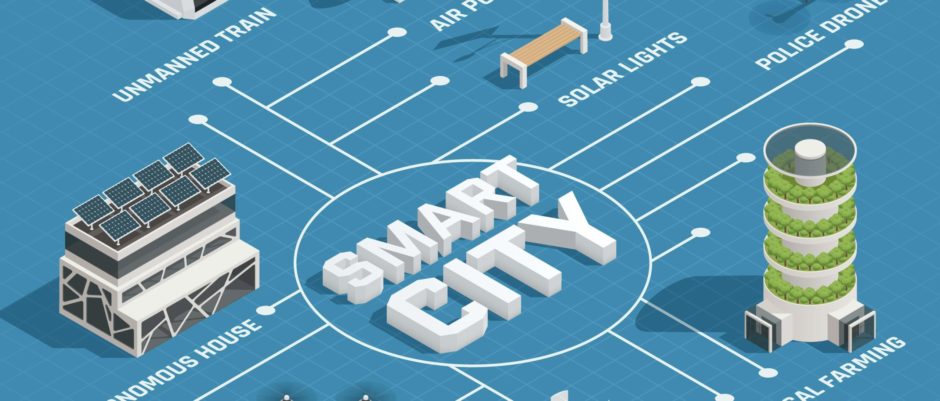Smart Cities – Post COVID-19
Smart City infrastructure has kept the government agencies ahead in curbing the spread of deadly Covid-19 virus. As per ministry of housing and urban affairs, the new infrastructure has helped the district administration across India in not just tracking suspected cases of COVID-19 but also monitoring the successful implementation of nationwide lock-downs in the country.
“While leveraging the smart infrastructure, cities are developing predictive analytics using heat maps and taking action in monitoring the movements (using geo-fencing) as well as periodic health status of suspected cases,” housing and urban affairs ministry said.
The new guidelines by the ministry of health and family welfare, NITI Aayog and Indian Medical Council allow remote delivery of medical services during the lockdown period. The guidelines also allow doctors to write prescriptions based on telephonic, textual or video conversations — chat, images, messaging, emails, fax and others. With new norms in place, now people can consult certified medical practitioners without going out and thus reducing the risk of COVID-19 spread.
Smart cities can help us combat the coronavirus pandemic. In fact, in a growing number of countries, smart cities are doing just that. Governments and local authorities are using smart city technology, sensors and data to trace the contacts of people infected with the coronavirus. At the same time, smart cities are also helping in efforts to determine whether social distancing rules are being followed.
But on the other hand, the use of masses of connected sensors makes it clear that the coronavirus pandemic is–intentionally or not–being used as a testbed for new surveillance technologies that may threaten privacy and civil liberties. So aside from being a global health crisis, the coronavirus has effectively become an experiment in how to monitor and control people at scale.
This is where smart-city technologies play an important role. The technologies that combine citizen reporting and artificial intelligence (AI)-based sensors will help the government formulate data-based decisions to cope with the pandemic based on the real situation on the ground. Transparent, quick and accurate decisions will also calm communities and help them get through this pandemic situation.
In addition, smart-city platforms will enable the government to use CCTV as an automatic sensor to provide reports. This capability can be integrated with various data, like COVID-19 patients, population and civil records held by the government. By integrating COVID-19 patient data with computer vision, the government can act quickly if there is a COVID-19 patient who escapes from quarantine. It will also send notifications to security staff smartphones so they can respond to the problem in a timely manner.
Enhancing CCTV capabilities with AI computer vision will also enable CCTVs to detect crowds automatically. With the vision-to-speech system that is also integrated with internet of things (IoT)-based speakers, it will have the ability to give warnings to crowds automatically. Other than that, the CCTVs will also send notifications to the nearest security officer, who will disperse the crowd directly.
On the other hand, a smart-city platform will also allow those in self-quarantine to provide periodic updates that can be monitored by the government. By providing citizens with a geographic information system (GIS)-based application, citizens can provide daily reports about their condition and can immediately provide alerts to the government if they are getting worse.
At the end of the day, smart-city platforms and solutions will help the government to effectively reduce the spread of COVID-19 by leveraging data and AI-based sensors. Both regional and central governments should be able to implement the technologies quickly to prevent the spread of COVID-19. The transparent and reliable data will also help recover or gain public trust, which has been decreasing since the first COVID-19 case.




